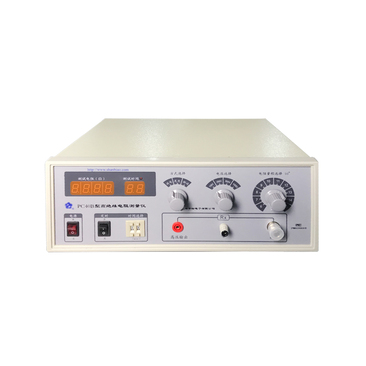Design and Application of Aging Test Chambers for Material Durability Assessment
Understanding Aging Test Chambers A Key to Product Reliability
In today’s fast-paced world, manufacturers are under immense pressure to develop products that not only meet consumer expectations but also stand the test of time. One of the crucial elements in ensuring the longevity and reliability of products, especially in industries such as electronics, pharmaceuticals, and automotive, is the aging test chamber. This specialized equipment simulates various environmental stresses that materials and products will encounter over their lifespan, providing critical insights into their durability and performance.
What is an Aging Test Chamber?
An aging test chamber is a controlled environment facility designed to accelerate the aging process of products. It exposes the items to extreme conditions such as elevated temperatures, humidity, and sometimes, even variations in light exposure. The purpose of these tests is to identify potential failures or degradations that may occur over time under normal use conditions.
The chambers are equipped with sophisticated technology that allows for precise control over environmental parameters. This control is crucial for replicating the conditions products may face throughout their lifecycle. For instance, a product intended for outdoor use might be subjected to cycles of high temperature and humidity to assess how it would hold up against sun exposure and rain.
Types of Aging Tests
There are several types of aging tests conducted within these chambers, including thermal aging, humidity aging, and stress testing. Thermal aging tests involve subjecting products to high temperatures for extended periods to evaluate thermal stability and longevity. Humidity aging tests involve exposing products to high humidity levels to assess the effects of moisture on their materials and components. Other tests may involve applying mechanical stress or exposure to UV light to gauge how these factors influence product integrity.
The Importance of Aging Tests
The significance of aging tests cannot be overstated. They serve as a predictive tool that helps manufacturers identify potential failure modes before products reach the market. By understanding how and when products might fail, companies can make informed decisions about design improvements, material selections, and overall product enhancements.
aging test chamber

Additionally, aging tests contribute to quality assurance. Regulatory bodies often require products, especially in the pharmaceutical and medical device industries, to undergo rigorous testing to ensure safety and efficacy. Through aging tests, manufacturers can demonstrate compliance with these regulations, which is essential for gaining market approval.
Real-World Applications
Consider the electronics industry, where components like capacitors, resistors, and connectors can degrade over time due to heat, moisture, and electrical stress. Aging test chambers allow manufacturers to predict the lifespan of these components, ensuring that finished products maintain their performance and reliability over time.
In pharmaceuticals, aging tests help to evaluate the stability of active ingredients in drugs. By simulating long-term storage conditions, companies can determine how long a drug will remain effective and safe for use, which is invaluable for consumer health and safety.
Challenges and Future Directions
Despite their importance, aging tests come with challenges. The cost of setting up and maintaining aging test chambers can be significant, particularly for small to medium enterprises. Moreover, some products may require custom testing protocols to accurately reflect their real-world applications, necessitating specialized knowledge and resources.
Looking forward, advancements in technology are poised to enhance aging tests further. Integration of data analytics and machine learning could lead to more sophisticated predictive modeling, allowing manufacturers to better understand product lifecycles and innovate accordingly.
Conclusion
In conclusion, aging test chambers play a pivotal role in ensuring the reliability and durability of products across various industries. By simulating real-world conditions and accelerating the aging process, these chambers provide valuable insights into product performance, helping manufacturers to uphold quality standards and meet consumer expectations. As technology advances, the methods and effectiveness of aging tests will continue to improve, ultimately leading to safer, more reliable products in the marketplace.
-
The Role of Tensile Force Testers in Quality Control and Material Science
NewsAug.01,2025
-
Maintenance and Safety Tips for Aging Ovens
NewsAug.01,2025
-
Density Balance in Forensic Science
NewsAug.01,2025
-
Advanced Optical Measurement Technologies
NewsAug.01,2025
-
A Buyer’s Guide to Tensile Test Machines
NewsAug.01,2025
-
Why the Conductor Resistance Constant Temperature Measurement Machine Redefines Precision
NewsJun.20,2025
 Copyright © 2025 Hebei Fangyuan Instrument & Equipment Co.,Ltd. All Rights Reserved. Sitemap | Privacy Policy
Copyright © 2025 Hebei Fangyuan Instrument & Equipment Co.,Ltd. All Rights Reserved. Sitemap | Privacy Policy
